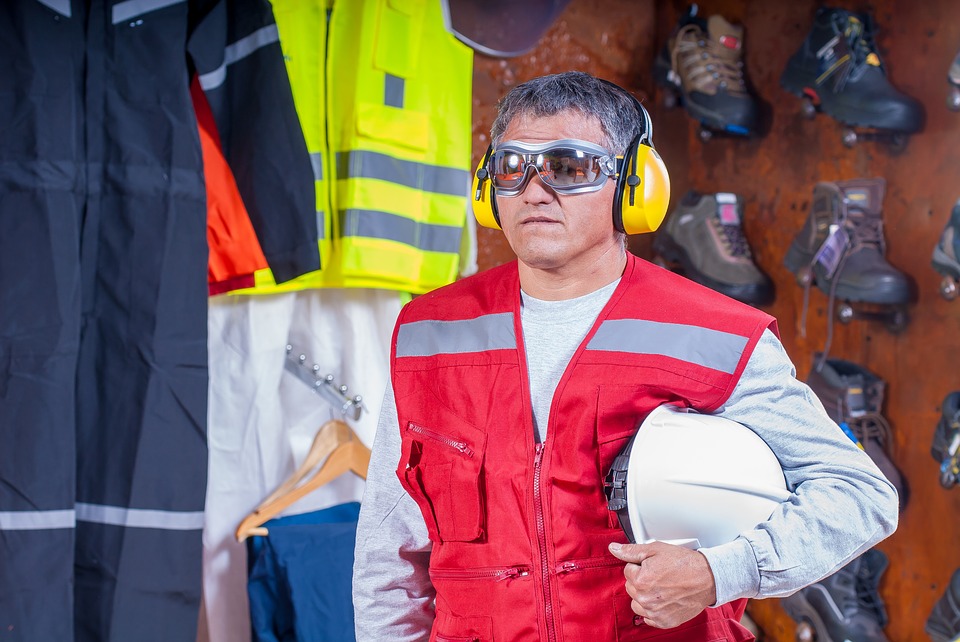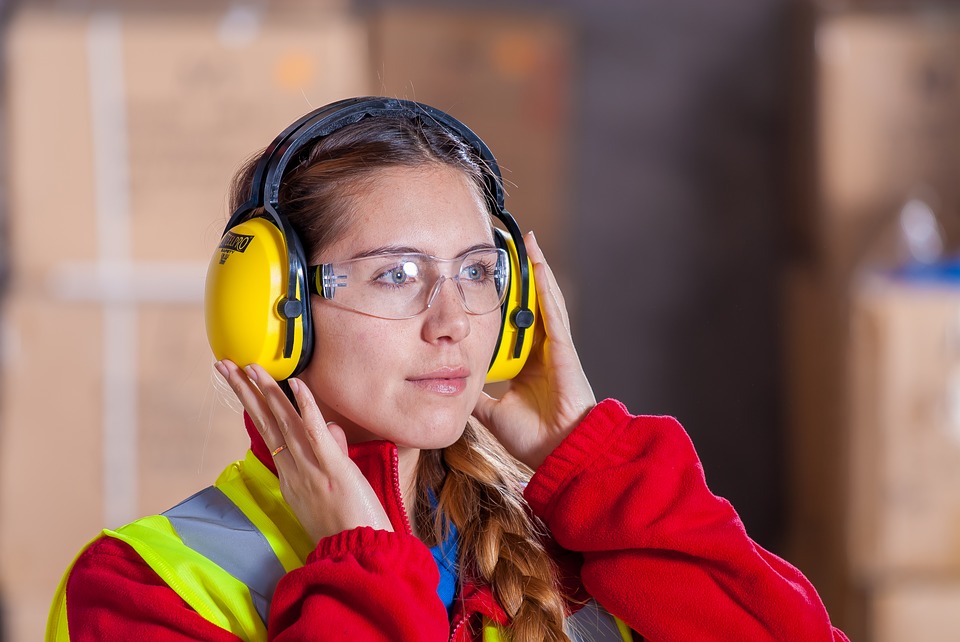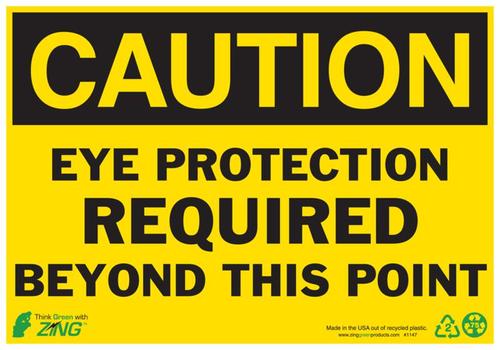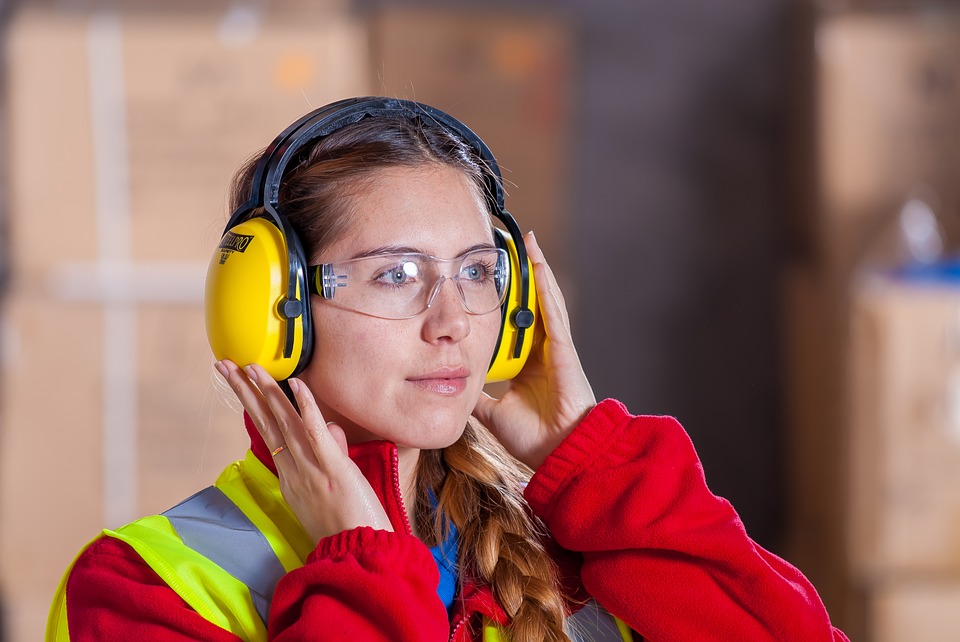Personal Protective Equipment (PPE) Guide
May 9th 2017
This short guide will help employers and workers understand personal protective equipment (PPE). We will help workplaces choose the right PPE, stay compliant, and maximize safety.

What is PPE?
Personal Protective Equipment (PPE) refers to wearable equipment that protects workers from workplace hazards. These hazards can include chemicals, dust and debris, potential impacts, sharp objects, loud noise, light radiation, and extreme temperatures. Some examples of PPE are gloves, safety goggles, ear plugs, hard hats, and protective footwear.
Employers must provide appropriate PPE to their workers. In order to know precisely what PPE are needed, a rigorous hazard assessment needs to be undertaken.
Performing a Hazard Assessment
The hazard assessment is the first step to building a safe and compliant PPE program. The aim of the assessment is to identify every potential hazard in a workplace that would require the use of PPE. A walkthrough survey of the working area must be conducted, and potential hazards should be made into a list. OSHA recommends dividing the list into the following categories:
- Impact
- Penetration
- Compression (roll-over)
- Chemical
- Temperature
- Harmful dust
- Light (optical) radiation
- Biological
Once a list of hazards is made, the employer should make a corresponding list of PPE to protect against each hazard. The employer should choose PPE that addresses all of the risks outlined in the hazard assessment. Whenever possible, PPE should exceed the minimum degree of safety required to protect employees against hazards. The American National Standards Institute (ANSI) details the levels of protection that must be met. OSHA refers to the following ANSI standards:
- Eye and Face Protection: ANSI Z87.1
- Head Protection: ANSI Z89.1
- Foot Protection: ANSI Z41.1
PPE Training and Maintenance
Employees must be trained to use their PPE properly. Workers must know:
- How to use their protective equipment
- When PPE must be used
- The limitations of protection
- How to maintain and care for PPE
Workers must receive training about how to properly use protective equipment. Supplying PPE is not enough to ensure protection; incorrectly used equipment could result in serious injury or death. Workers must be able to demonstrate that they understand how and when to use their equipment, and precisely what level of protection the PPE provides. Workers must also be trained to maintain their equipment, so that it continues to provide the proper level of protection. All training should be clearly and thoroughly documented, including the names of workers who have undergone training and the dates of the training. Periodic retraining is also necessary. Retraining should occur when:
- Any new equipment, employees, or hazards are introduced into a workplace
- A worker is not demonstrating the correct procedures regarding PPE
Periodic general retraining to reinforce best safety practices is also recommended.
Types of PPE
This section will provide a brief overview of some of the most commonly used types of PPE and their applications.
Hearing Protection

There are two main factors involved in analyzing a hearing hazard: loudness (generally measured in decibels) and duration. Ear plugs and ear muffs reduce the amount of noise that reaches the ears, and are available in several levels of protection. The degree to which earplugs limit noise is called attenuation. OSHA provides a table (see G16) which shows how much attenuation is needed in a given workplace situation. Because hearing injuries are often irreversible, ear plugs that meet or exceed the recommended levels of attenuation are a very important aspect of any good workplace safety program.
Hand Protection
Many serious hand and arm injuries can be prevented by installing preemptive safeguards. For instance, if moving machine parts pose a hazard to hands and arms, the most efficient and safe solution is to install a safeguard that prevents the possibility of hands or limbs being exposed to the moving parts. If it is not possible to install a safeguard, it is necessary to acquire the proper PPE. The most common PPE for hands are protective gloves.
Determining what type of gloves are needed requires a thorough understanding of the hazards in a given workplace. Extreme temperatures, abrasion, chemicals, sharp objects, and electricity all require different types of safety gloves:
- Leather gloves protect against rough objects and moderate temperatures
- Fabric gloves protect against wood slivers, abrasions, and chafing
- Aluminized gloves provide protection against heat and cold
- Butyl gloves protect against a variety of chemicals, including corrosive acids. Butyl gloves are not recommended for aliphatic hydrocarbons or halogenated solvents.
- Latex gloves protect against water solutions of acids, alkalis and ketones.
- Neoprene gloves protect against hydraulic fluids, organic acids and alcohols.
- Nitrile gloves protect against chlorinated solvents, acids, caustics, and alcohols.
Foot Protection
Protective footwear can prevent serious injuries to feet and legs. Nails, jagged objects, electrical hazards, molten metal, slippery surfaces, extreme temperatures, and rolling and impact hazards can all pose serious threats to foot and leg safety. ANSI Z-41 sets forth the requirements for impact and compression protection. All ANSI-approved footwear has a protective toe. Sometimes, though, a protective toe is not enough to provide adequate protection. Metatarsal guards, which protect the instep of the foot, and external toe guards may be required to provide additional protection. Shin guards and leggings may also be necessary to protect the lower legs.
Electrical hazards require non-conductive shoes. These shoes prevent feet from completing an electrical circuit. Non-conductive footwear must not be used wherever there is a potential explosion hazard.
In workplaces that present explosion hazards, conductive footwear is necessary to prevent the buildup of static electricity. Static electricity buildup could cause sparks, which in turn could trigger an explosion or fire. Workers who are exposed to electrical hazards must not wear conductive shoes.
Head Protection

Head protection is an essential safety consideration for every workplace. Head injuries can cause serious irreversible injury or death; the proper use of PPE can protect workers from serious, preventable accidents. The most commonly used PPE for head safety are hard hats and helmets. Hard hats protect the head from potential impact, penetration, electrical shock or burns. Each workplace must be thoroughly examined, and the proper hard hats must be provided accordingly. The hazard assessment must note any workplace situations in which:
- Loose objects could fall onto the heads of workers.
- Stationary objects, such as construction beams, pipes, or scaffolding pose a potentially dangerous impact threat.
- Electrical hazards could come into contact with the heads of workers.
There are three types of hard hats: Class A, Class B, and Class C.
- Class A hard hats provide impact and penetration protection, and electrical protection up to 2,200 volts.
- Class B hard hats provide impact and penetration protection, and electrical protection up to 20,000 volts
- Class C hard hats are generally lightweight and provide impact protection only.
All hard hats must provide impact protection and shock absorption, and offer protection equal or above the requirements of ANSI Standard Z89.1. Hard hats must also be replaced if they show any signs of wear or if the hard hat has sustained any impact, even if the helmet appears to be undamaged.
Eye Protection

Dust, flying particles, gases and vapors, and light radiation are just some of the most common hazards that require eye protection. Carpenters, electricians, pipefitters, mechanics, machinists, logging workers, and welders frequently need eye protection to work safely. A thorough hazard assessment will determine if there are other employees also in need of protective eye equipment. Eye equipment should be considered wherever particles or debris could enter the eye, light radiation is emitted, or liquid solvents or chemicals could potentially splash into the eye.
Some of the most common types of eye protection include safety glasses, goggles, welding shields, and laser safety goggles. All types of protective eyewear must:
- Provide adequate protection.
- Fit properly and comfortably.
- Allow unrestricted vision. If an employee needs corrective glasses or contacts to see clearly, the safety eyewear must be comfortably worn over the corrective eyewear. Prescription corrective safety eyewear is also available.
OSHA provides very specific information regarding the amount of protection needed for radiant energy. For welding shields, see OSHA 1926.102(c)(1); for laser protection, see OSHA 1926.102(c)(2)(i).

